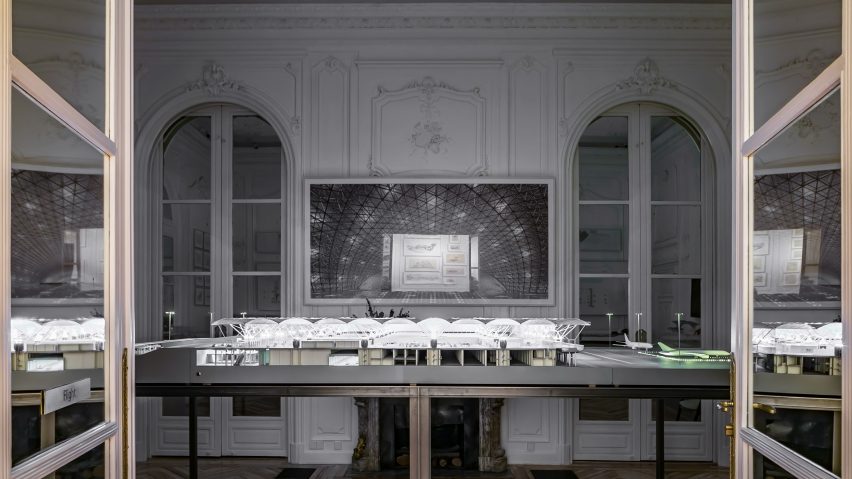Photographer Jose Manuel Ballester provides an intimate look inside the Norman Foster Foundation in Madrid for his book Spaces, detailing the architect's vast collection that ranges from a car owned by Le Corbusier to a model of Apple Park.
Founded in 1999, the Norman Foster Foundation supports the development of the new generations of architects, designers and urbanists via interdisciplinary programmes and projects designed to encourage them to research the future of cities.
Holding over 74,000 objects dating from 1950 to the present day, the Foundation's archive, library and study spaces are housed in a historic former residential palace on the Calle Monte Esquinza.
A pavilion built in its courtyard was designed by Norman Foster's studio within the foundation.
Made from glazed walls that support a fibreglass roof, the single-storey structure is used for programmes and events, as well as housing a collection of items that have personally inspired Foster throughout his career.
Jose Manuel Ballester's book, published by the Norman Foster Foundation, includes a foreword written by Norman Foster himself and over 120 pages of colour photography of the foundation, which opened in June 2017.
Ballester was given free reign of the expansive archives, photographing displays of design objects and architectural models, framing what Foster described in his foreword as "unpredictable perspectives" of the collection in situ.
"First, I wanted to register the spaces as a whole," Ballester told Dezeen. "And second, I focused on the most relevant works of Norman's extensive career and how they appear within the circuit traced by the foundation, always keeping its context and in the same way with the most appreciated objects that the foundation houses."
A cloud-like metal sculpture by American artist Iñigo Manglano-Ovalle hangs over a car once owned by architect Le Corbusier, which Ballester frames surrounded by their reflections in the ceiling and glass vitrine.
A final model of the Foster + Partners-designed Apple Park campus is in the foreground of one shot, with a maquette of an earlier version hanging on the wall behind it.
The project recently made headlines after staff reported injuries from walking into glass doors that divide the circular interior.
Views of different gallery spaces and the pavilion reveal the huge volume of architectural models and drawings in the collection, including and the 1999 redesign of the Reichstag in Berlin.
One gallery is given over entirely to models from all of the airports Foster has worked on.
Drawings from Foster's student days are presented alongside drawings from a 1970s collaboration with architect Buckminster Fuller on the Samuel Beckett Theatre, a subterranean project beneath an Oxford college in England that was never realised.
Mostly Ballester shot the scenes as he found them, using Phaseone IQ 80 and Canon EOS 5 D Mark iV cameras, and occasionally his smartphone.
"Normally I take photos as I find the objects because it was very important to respect the position at the foundation, but the foundation has a great number of activities, changing continuously, that's why I had to adapt to the circumstances," he said.
"The number of objects is so diverse as regards as Norman's legacy and those objects that have been significant to him, that's why I had to use different cameras and a varied number of lenses."
The book provides an insight into the Foundation's archive, which provides is a unique resource and is central to its mission.
The headquarters were established as a separate entity from Foster + Partners in order to provide a permanent home for the archive, and to create a study centre for the student and graduate beneficiaries of the foundation to base themselves in Madrid.
The foundation facilitates yearly travelling fellowships organised in tandem with the Royal Institute of British Architects.

